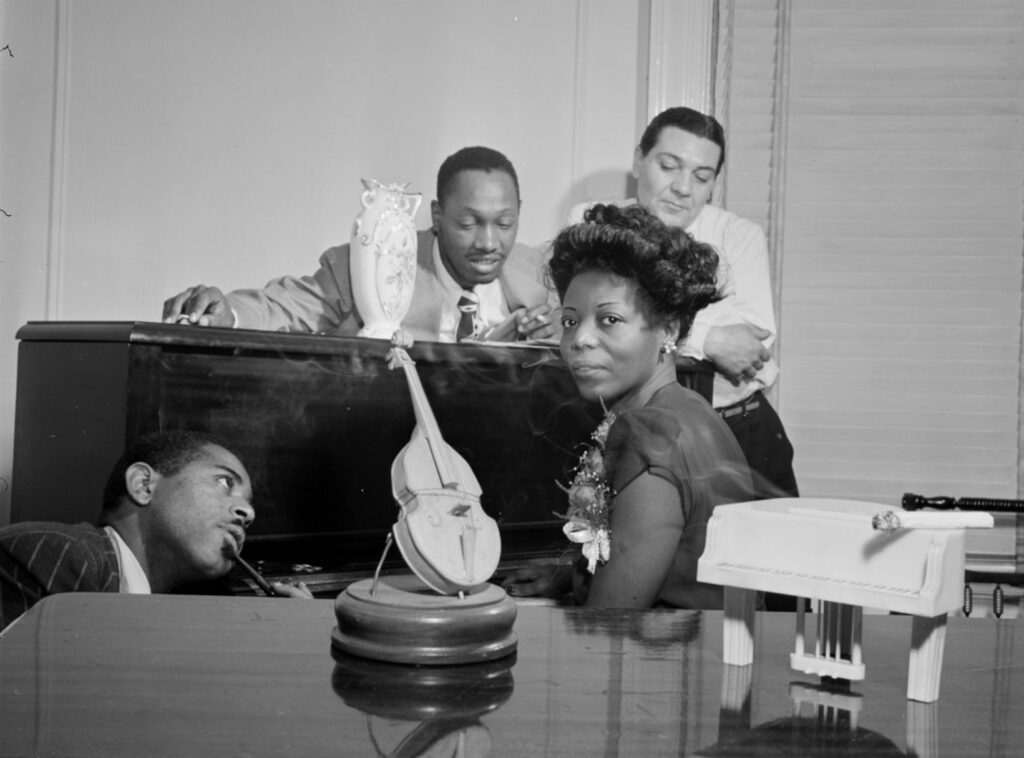
In many ways, Barney Josephson was the godfather of Mary Lou Williams‘ first extended composition, “Zodiac Suite“. Williams had been a staple at both of Josephson’s Café Society clubs since 1944, and the shoe-salesman-turned-club-owner Josephson was so pleased with her work that he landed the pianist a Sunday afternoon radio show on WNEW. Williams, who had been toying with the astrological suite for some time, decided to premiere a new movement of the suite on each week’s show. After a few weeks, her schedule overtook her compositional goals, and she simply improvised a new piece on each episode. Still, a good portion of the suite was written by June 1945, when Williams, bassist Al Lucas, and drummer Jack “The Bear” Parker entered Moe Asch‘s recording studios to record a trio version of the suite. The piece cried out for orchestration, and Williams’ friend Milton Orent gave her a crash course in modern classical composition 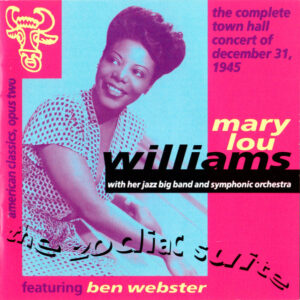 and traditional orchestration. Together, they re-scored the suite. Josephson booked Town Hall for Williams’ concert on December 31, 1945. A small orchestra was hired, along with several of Williams’ favorite jazz soloists. Unfortunately, most of the limited rehearsal time was spent correcting mistakes in the orchestra parts, and the classical musicians were quite uncomfortable with the jazz rhythms. The sole recording of the concert was missing for many years, but was finally issued in the mid-1980s on the unauthorized Vintage Jazz Classics label. [Full disclosure: I worked for that record company for a short period, but the Williams project was issued many years before I was employed there.]
and traditional orchestration. Together, they re-scored the suite. Josephson booked Town Hall for Williams’ concert on December 31, 1945. A small orchestra was hired, along with several of Williams’ favorite jazz soloists. Unfortunately, most of the limited rehearsal time was spent correcting mistakes in the orchestra parts, and the classical musicians were quite uncomfortable with the jazz rhythms. The sole recording of the concert was missing for many years, but was finally issued in the mid-1980s on the unauthorized Vintage Jazz Classics label. [Full disclosure: I worked for that record company for a short period, but the Williams project was issued many years before I was employed there.]
In the intervening years, “Zodiac Suite” has become Mary Lou Williams’ most recorded extended work. In addition to the Asch recordings (reissued on Folkways and Smithsonian), several contemporary musicians have recorded the trio version, including a splendid recording by one of Williams’ greatest champions, Geri Allen. Chris Pattishall created a unique arrangement of the suite in 2021. Williams recorded three movements live at the 1957 Newport Jazz Festival with Dizzy Gillespie’s Orchestra, but a proposed recording of the entire suite was never realized. And now, two new recordings of the fully orchestrated version were released within 6 weeks of each other! The first to be released is by pianist Aaron Diehl and the New York orchestral collective, The Knights. But not to be outdone is the recording by the European Umlaut Chamber Orchestra, conducted by Pierre-Antoine Badaroux. The principals have all dedicated many hours of study to Williams’ music. In the past year, Diehl has performed “Zodiac” with the Philadelphia and Cleveland Orchestras, and will play it again with the St Louis Symphony in January 2024. Right before the pandemic, the Umlaut Big Band recorded a 2-CD collection of Williams’ big band scores called “Mary’s Ideas“.
In an effort to note the strengths and weaknesses in each recording, here is a movement-by-movement comparison of the new discs, with Williams’ Town Hall concert used as the standard.
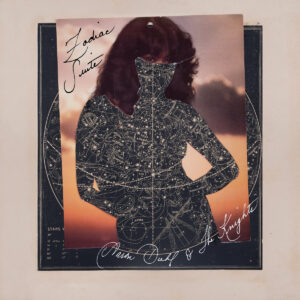
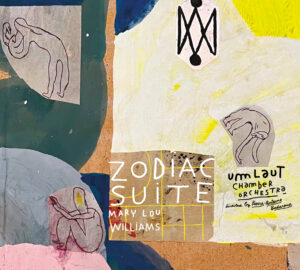
“Zodiac Suite” is in twelve movements with a brief introduction spliced onto the opening movement. The movements are named for the various astrological signs, but Williams dedicated each movement to musicians, entertainers and public figures born under those signs. At Town Hall, Mary Lou Williams, bassist Al Hall, and drummer J.C. Heard appeared at Town Hall with an chamber orchestra of two violins, two violas, cello, flute, oboe, clarinet, bassoon, horn, trumpet, trombone, piano, double bass, drums and a classically-trained soprano. Diehl and The Knights add 3 violins, 1 viola and 1 cello to the above instrumentation. Umlaut‘s personnel uses the same complement of horns, rhythm, and voice, with a string section of 7 violins, 2 violas, and 2 celli. Orent conducted at Town Hall, Badaroux led Umlaut, and Eric Jacobsen conducted The Knights.
The 30-second “Introduction” was composed by Orent to accompany Williams’ stage entrance. After a dramatic orchestra chord, there are brief solos by flute, oboe and bassoon. The Town Hall recording has a minor speed problem on the opening notes, and the oboe solo is inaudible behind the applause for Williams. Both of the later recordings benefit from stereo digital recording, and greater confidence from the orchestral musicians. All three performances segue into the bright and skippy opening of “Aries”. In less than two minutes duration, the piece covers an impressive amount of ground, accelerating and decelerating into various moods. One central section plays over a drone, and this marks the first major difference in these recordings. Williams and the woodwinds start a contrapuntal dialogue in this section, Diehl and the Knights do the same (but with greater brass punches and Diehl more of a presence than Williams). The Umlaut performance uses the quickest tempo at first, and the interplay of the drone section gives way to an intense piano solo by Matthieu Naulleau. The closing ritard is gentler here than with The Knights. At Town Hall, “Taurus” was played by the rhythm section alone. Solo piano chords led to a medium-tempo section featuring a sultry repeated figure accentuated by brushes on snare. The ending reverted back to the meditative opening. The unused orchestration is heard on both new versions, and it changes the mood of the work. High sustained violin notes add tension to the piano solo, while the addition of horns and low strings adds heft to the repeated motive. The return of the high violin drone in both the central and closing section gives an eerie feeling to the movement. There is a wonderful part for bass clarinet near the end, and I’m sure that both Chad Smith (of The Knights) and Geoffroy Gesser (of Umlaut) enjoyed playing this passage. I like the swagger of Diehl and the Knights on this track; it sounds like the soundtrack of a film noir, and gives us a taste of the mood of the 1940s.
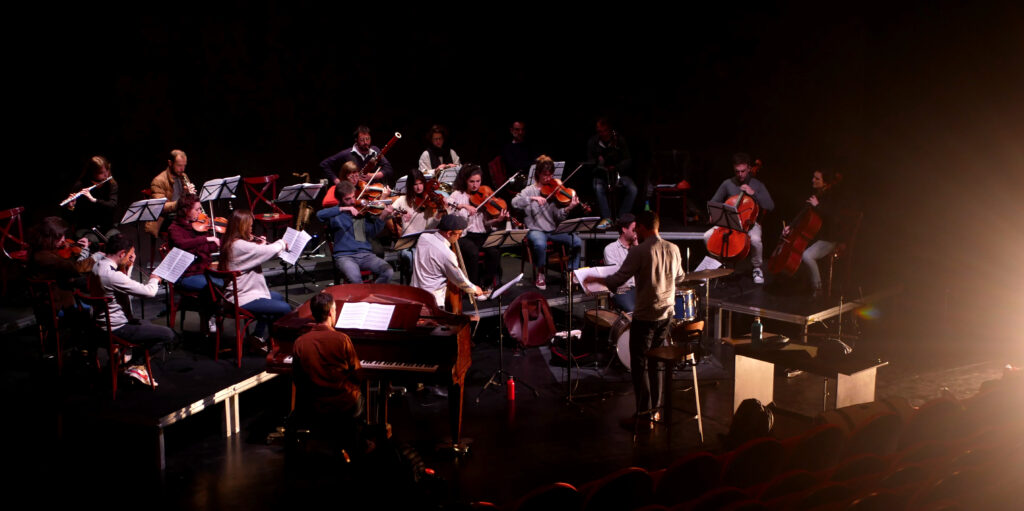
“Gemini” is a very interesting movement. Williams portrays the dual personalities with alternating fast and slow tempos (with the fast pulse predominating). The opening theme is inexplicably pedestrian: a tonic triad arpeggiated up and down leading to an ascending major scale in the upper winds and strings. The presentation of the melody is so obvious that the listener can predict the entire pattern after only two bars. The middle section is a boogie-woogie with a featured clarinet solo (a direct reference to one of the movement’s dedicatees, Benny Goodman). On the original concert, Eddie Barefield offered a fairly good facsimile of Goodman, and guest clarinetist Evan Christopher solos with his own unique sound before Diehl and The Knights. For some reason, the Umlaut recording features trombonist Michaël Ballue in this spot. He plays well, but one wonders why the change was made. Apparently, the original orchestration called for solo bassoon on the boogie bass, but that was changed at Town Hall—probably because the bassoonist had no swing and tended to rush—and all three versions move the bass part back to the piano. The slow ballad, “Cancer” was arranged to feature Ben Webster, and the Town Hall recording has the great tenor man intoning the mournful tune before playing a sad and slow improvisation. This may have been the first time Webster recorded with strings. He sounds quite comfortable in this setting, and a decade later, he would make an acclaimed series of ballad albums with strings. Nicole Glover takes the solo on the Diehl/Knights version, and she plays with a tone reminiscent of Stan Getz‘s from the “Focus” album composed by Eddie Sauter. The Umlaut version is much slower than the others, with Gesser improvising within the style but not really taking charge until the (added) final cadenza.
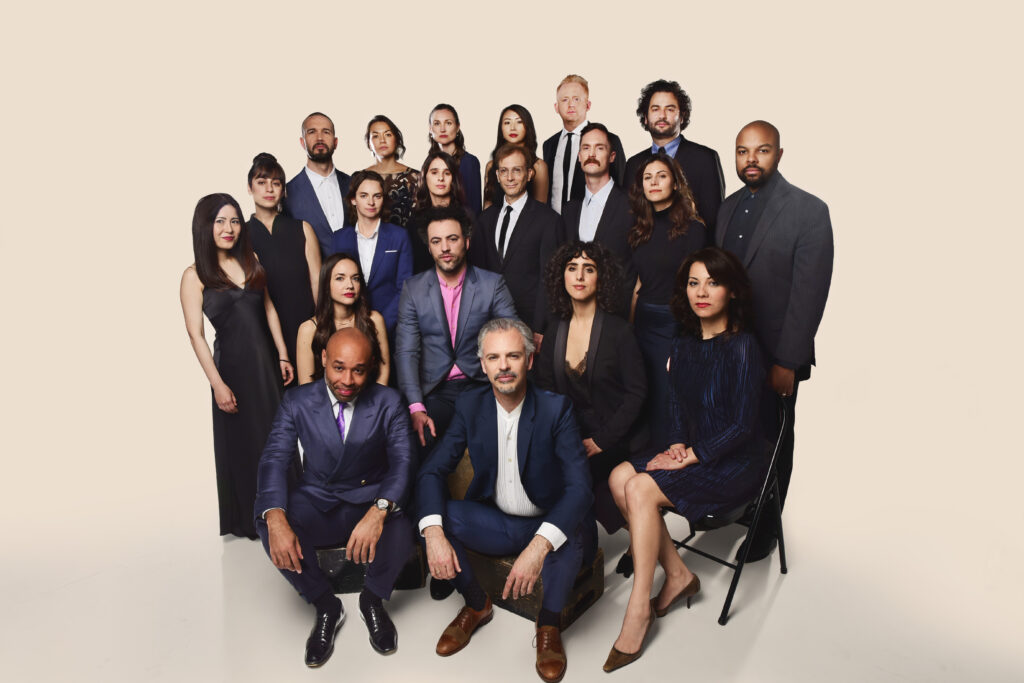
Fitting a King, “Leo” opens with a majestic brass fanfare, which is followed by a dialogue between piano and orchestra. An extended violin cadenza in free tempo leads to a passage for strings with a spot of impressionism added to close the movement. None of the groups seem to know exactly what to do with this stylistic conglomeration, but Umlaut makes the best of it with strong brass, a dialogue that sounds like a classical piano concerto, and a quick run through the strange ending. “Virgo” moves back into familiar territory, with soulful jazz solos over a swinging background. The Town Hall is basically a concerto for trumpeter Irving “Mouse” Randolph, who plays a finely-developed solo with a bravura coda. Umlaut reverts to the scoring originally planned for Town Hall, with blues solos for trumpet (Brice Pichard) and piano (Naulleau). The final trumpet cadenza is retained with a brief orchestra passage cut at Town Hall. On the Diehl/Knights CD, Brandon Lee plays the opening solo with a lovely rich tone. The piece is opened up to include a bass solo by David Wong, and an extended spot for Diehl. The relaxed swing is most pervasive when Lee returns for his solo. “Libra” brings back the solo trumpet for a reflective ballad, with the melody later repeated by the solo piano. These solos are separated by Ravel-like episodes from the orchestra. The trumpet soloists are the same as on “Virgo”. Umlaut’s superb ensemble enriches the orchestral passages, but Pichard adds a little too much Harry James into his sound. On the Diehl/Knights version, Lee leans closer toward Clifford Brown, and the orchestra plays a little too leisurely.
At Town Hall, “Scorpio” was played by the rhythm section with isolated interjections by horn soloists. It is marked by a recurring boogie figure. The orchestration adds another level of mystery to the piece, with moody ensemble and solo episodes. The wind scoring in the boogie section is quite inventive, with rich colors emerging among the typical Hollywood/Broadway string voicings. It’s a tough choice between the two new versions, but I’m going with Umlaut again for the ensemble, and the very airy recording. “Sagittarius” sounds like the light pastoral movement of a classical woodwind quintet. Umlaut’s relaxed reading gives it the advantage again. “Capricorn” is a very strange movement. At the beginning, its see-sawing vamp sounds like a background without a soloist. When the orchestra finally plays a melody, it feels too convoluted for what preceded it. The piece was dedicated to Frankie Newton, and it’s too bad that Williams couldn’t convince Newton to play at Town Hall. He would have been a good addition to the jazz ensemble, and I suspect he would have improvised profound statements over that haunting vamp. The slower tempo on the Umlaut recording makes it a better experience. Diehl starts the piece like Rachmaninoff’s Second Piano Concerto and that just makes the orchestration more interminable. The coda is better here, but it all seems for naught.
“Aquarius” is a delightful set of variations on a simple, but catchy theme. It was to be the orchestra’s feature at Town Hall, but limited rehearsals led to necessary cuts. Instead, Williams played the majority of the piece, with little pieces of the orchestration kept in for color. Again, the new recordings go back to the full orchestration to reveal a different level to the work. The instrumental lines—especially in the woodwind parts—are light and delicate and the entire piece is played at reduced volume to maintain the established mood. The piano enters about halfway through the piece, and in the Umlaut version, it guides the performance just as Williams did at Town Hall. Diehl plays only a passage or two with the Knights, and that works very well (and probably what was intended from the start). Williams wrote that the final movement, “Pisces” was written with “a theme but no set pattern”. Essentially, it’s an art song for soprano and orchestra, and not surprisingly, the Town Hall orchestra played it very well (albeit with faulty intonation at the opening). Hope Foy was the soprano soloist, but no one has ever discovered who wrote the lyrics. Umlaut’s soprano soloist, Agathe Peyrat has a light voice and clear diction which makes the words easier to understand, and The King’s soprano, Mikaela Bennett, takes the middle road with more drama, and a dazzling high note for the finish. In any case, it is a very weak ending to the suite, especially since it has little relation to the music that preceded it. In a way, I prefer the Town Hall recording because it doesn’t end there; we still get to hear the jam sessions that comprised the second half of the concert. With the two new discs, there are no jams, no encores, or even a companion piece. (And why is that? Are record companies so enamored of the vinyl revolution that we have forgotten the value of CD bonus tracks?)
The toughest part about writing a review like this is trying to decide which disc is best. With due respect to Mary Lou Williams, Milton Orent, Ben Webster and the other soloists, the Town Hall concert recording is more useful as a reference than a top-notch performance. Aaron Diehl and The Knights get a slightly higher rating than the Umlaut Chamber Orchestra only because of the superior guest soloists. Yet, I still like the airy sound—and recording—of the Umlaut group. The good news is that you won’t go wrong with either of the new discs, and in both cases, you will hear Mary Lou Williams’ music in original orchestrations performed by outstanding musicians. Barney Josephson would be proud.
I learned about the Umlaut recording the day before I wrote this review. I am deeply grateful to the following people who mobilized their forces to help me find people and gather sources: conductor Pierre-Antoine Badaroux, author Deanna Witkowski, historian Elizabeth Surles (Institute of Jazz Studies), publicist Léna Lenglet (Umlaut), artistic director Kiku Ono (the Knights), and publicist Michelle Gutenstein-Hinz (Missing Link).